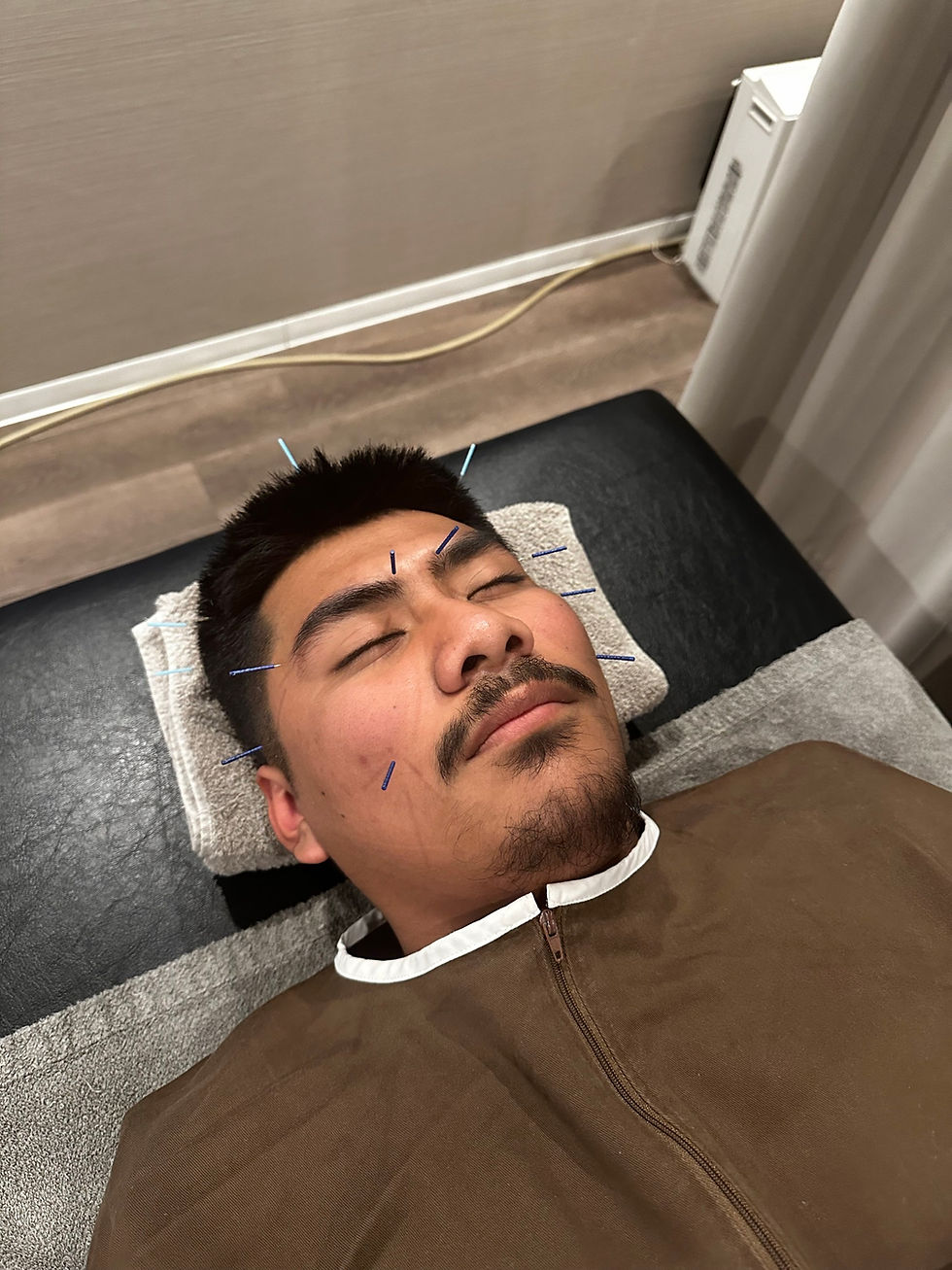【Relieving Overall Tension and Shallow Breathing Caused by Back Tightness|Addressing Symptoms Early】
- 田澤 大輔

- Dec 27, 2024
- 3 min read
Updated: Feb 20
A patient who had been regularly visiting me until this past summer returned after a long absence. Upon discussing his situation, he shared that work had suddenly become very demanding since the start of autumn, leading to continuous hard work and ultimately affecting their health. As a result, he began experiencing more pain and discomfort and decided to visit me again to find relief.
When subjected to prolonged desk work or repetitive bending postures, the back muscles are prone to stiffening due to the strain. This patient exhibited significant tension in his back muscles. Similar to shoulder stiffness or lower back pain, tension in the back muscles can lead to poor circulation, nerve compression, and various other physical issues.
Furthermore, while lying face-up on the treatment table, the patient displayed shallow breathing and an overall state of excessive physical tension. In such a condition, relaxation becomes difficult, preventing the body and mind from properly resting. While the patient expressed interest in fascia release therapy, it became clear that focusing on breathing techniques alongside physical treatment was crucial to addressing their tension effectively.
Checking for Areas of Tension During Fascia Release
I started by carefully checking the areas of tension in the patient’s body, moving his limbs and torso gently while he remained clothed. The restricted movement around his back and shoulder blades was especially notable, so I used his own body weight to approach the fascia. Fascia release is highly effective in reducing muscle tightness and restoring flexibility. Since this patient was sensitive to strong stimulation, I used a gentle approach to gradually relieve the tension in their fascia.
Incorporating Breathing Techniques During Treatment
Encouraging deep breathing during the session helped release tension throughout the body. Shallow breathing often exacerbates physical tension, so I guided the patient to practice deep breaths while proceeding with the treatment. As the session progressed, the patient’s breathing deepened, and he could sense an improvement in his body’s energy flow.
Scalp Massage to Enhance Relaxation and Regulate Breathing
After significantly relaxing the back muscles, I performed a scalp massage to further promote relaxation. The scalp contains many acupressure points, and stimulating these can enhance blood circulation and induce a deep state of relaxation. Loosening the scalp muscles helped alleviate overall body tension and further improved the patient’s breathing.
Post-treatment, the patient expressed relief, saying, “I was worried because my condition suddenly worsened, but I feel much better now.” However, he also mentioned, “I was doing well until summer, but work has been so busy lately...” with a somewhat dejected tone. It seems his sudden health decline after a period of stability had caused them some concern.

Future Measures and Prevention
Starting next week, the patient has agreed to resume regular visits. To stabilize muscle condition, I recommended maintaining consistent care going forward.
For individuals engaged in prolonged desk work or physically demanding jobs, incorporating regular stretching and light exercise into their routine is essential. Most importantly, paying attention to your body’s signals and addressing issues early is key to prevention.
If you are noticing unusual changes in your physical condition or feel that daily fatigue is accumulating, I encourage you to make an appointment promptly. Regular body care not only aids in prevention but also promotes a healthier and more balanced lifestyle.
Daisuke Tazawa
BODYWORKS AZABU
◎ Permission has been granted by the patient to post the image and details of this treatment
◎ Images designed by Freepik




